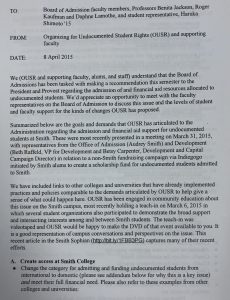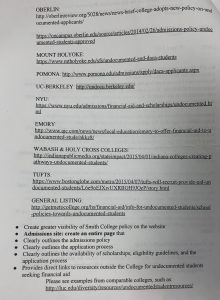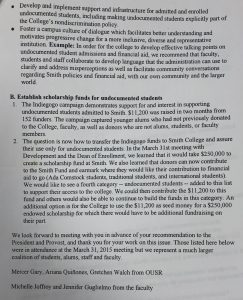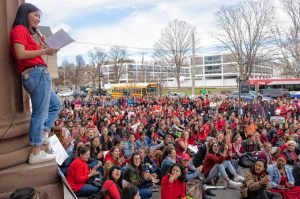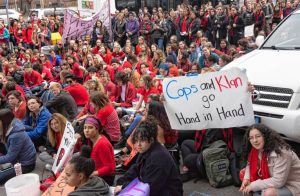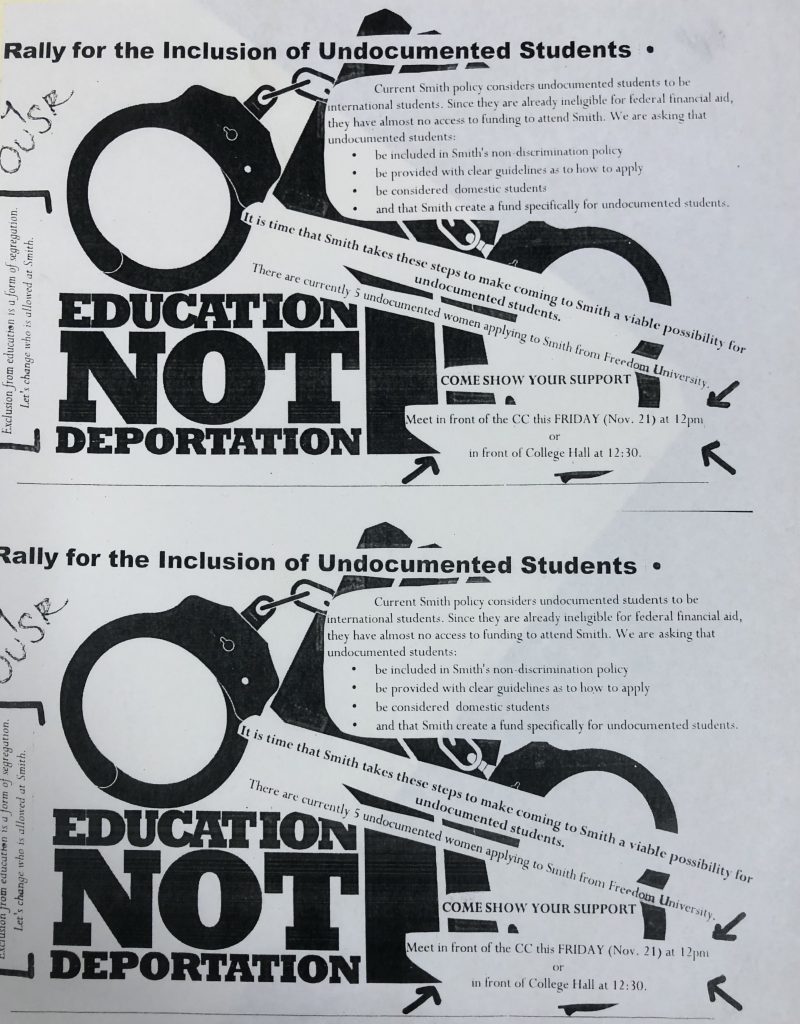
In 2015, tensions surrounding immigration flared with the beginning of Donald Trump’s 2016 presidential campaign built around using scare tactics to make American citizens afraid of undocumented immigrants, particularly those from Mexico and other Latin American countries. Rates of crimes against Latin Americans, regardless of their immigration status, spiked across the country as Trump painted pictures of undocumented immigrants as criminals and rapists. Following immigration’s reentrance into the national political limelight, Smith students began to more closely examine Smith’s own policies regarding undocumented students and applicants. OUSR, the Smith Organizing for Undocumented Student Rights organization, pushed Smith to change much of their policies in light of Trump’s violent rhetoric, including a move to consider undocumented students as domestic rather than international students in order to maximize their access to financial aid.
As is the case for colleges across the country regarding issues as complicated as immigration, one rally did not forever eradicate it. In 2019, Smith and Mount Holyoke students discovered that their new joint campus police chief Daniel Hect had been liking tweets supporting President Trump and promoting anti-immigrant sentiments. This was particularly concerning due to the uncertainty of the future of DACA (Deferred Action for Childhood Arrivals), or the Dreamers program, under President Trump’s administration. Undocumented students felt uncomfortable with a police chief who did not support their presence on Smith and Mount Holyoke’s campuses, and so Smith students organized a protest against Hect during Smith’s Day of Diversity and Inclusion. The protest was successful in forcing Hect’s termination, but the students organizing the protest also distributed a longer list of 28 demands addressing Smith’s treatment of undocumented and other vulnerable students, not all of which have yet been addressed by the administration.
